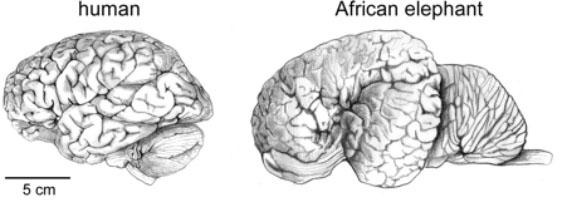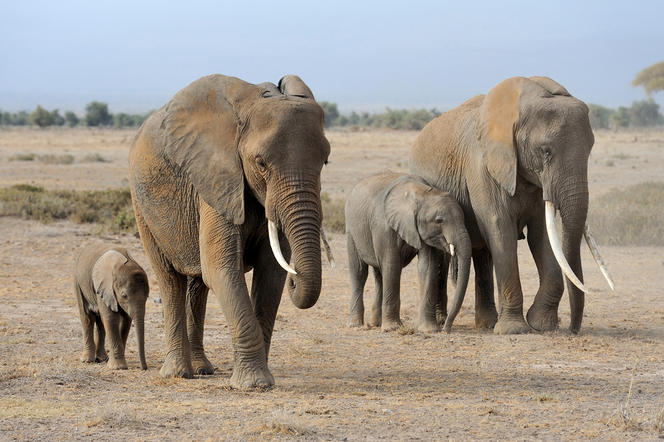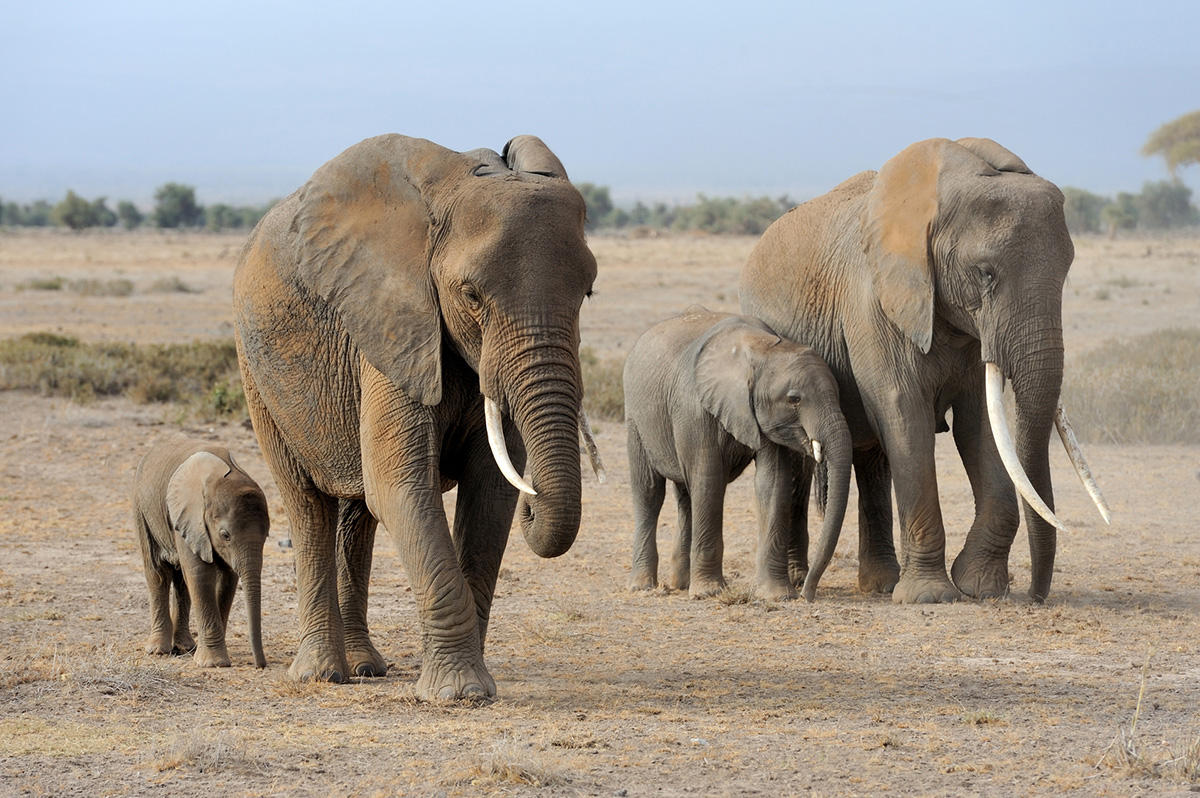You are here
Studying Elephants’ Sleep Patterns to Understand our Own?
A natural, spontaneous and reversible state of loss of consciousness, sleep is one of the body’s vital functions. It is characterized by a gradual decrease in major functions, including reduced motor activity, a slower heart rate and discontinuity in brain activity. Sleep can be broken down into three stages: light, deep, and rapid-eye-movement (REM, also called paradoxical sleep. Many studies on mammals have investigated this vital activity and its functions, but it still holds many mysteries.1
In March of this year, a new research work published in Plos One 2 revealed that elephants are the “lightest” sleepers of all mammals.
An innovative study in a natural environment
Researchers have long been fascinated by these large mammals and their incredible cognitive abilities, which include empathy, self-recognition, memorization, cooperation, theory of mind, the ability to communicate, the use of tools for grooming, and more. Their sleep has also been the focus of many studies, which had previously yielded only rough estimates of their sleep time. The existing data indicated that they experience more frequent sleep or rest phases between 10 pm and 7 am. However, the main problem with these studies is that the vast majority were conducted on captive animals, in other words elephants with guaranteed access to food and water, and under no threat from predators. Indeed, certain studies suggest that animals sleep much less in their natural habitats—where they are subject to environmental stress factors—than under artificial conditions.3
In this new study, scientists from the University of the Witwatersrand (South Africa) followed two female elephants in Botswana’s Chobe National Park for 35 days. Subcutaneous implants containing an actimeter were inserted in the animals’ trunks, an organ that they rest on the ground while sleeping. This device allowed the researchers to quantify the mammals’ trunk movements and thereby monitor their sleep stages. They were also equipped with a standard collar integrating a GPS system in order to track their locations and movements, as well as a gyroscope to detect their position (standing or lying down) during sleep.
The elephant, world champion of insomnia
The authors determined that the two female elephants slept for a total of about two hours per day. This is much less than what was previously observed in these animals, and in fact represents the shortest sleep time ever documented for mammals. In addition, the scientists noted that out of the 35 days of the study, the elephants stayed awake for four non-consecutive days, and over periods of up to 46 hours, during which they were also particularly active. This seemed to be due to environmental stress factors, such as the presence of a predator or intensive human activity (poaching in particular). Nonetheless, on the following nights, the elephants did not sleep more to make up for the lost sleep and did not seem to be affected by the lack of rest.
These results are consistent with previous observations on herbivorous mammals, which have shown that the larger these specimens are, the more time they spend eating to maintain their energy levels—and the less they sleep. Moreover, these two elephants’ short periods of sleep could also be an adaptation to environmental stress, caused in particular by the presence of predators, especially in the case of two matriarchs heading a group of females and baby elephants. The oldest female of a group and the custodian of its knowledge—in particular the memory of its migratory routes—the matriarch must guide and protect the others. It is therefore possible that these females stay alert much more than the younger elephants.
Elephants’ sleep is polyphasic
The researchers also observed that the elephants’ sleep was not continuous, but was divided into several phases (averaging five) over the course of the night. Their sleep consisted of a main phase lasting about one hour, as well as several shorter ones of about 20 minutes each, mostly preceding the main sleep phase. In addition, the scientists noted short nap phases during the day. These results indicate that elephants engage in polyphasic sleep, which is divided into multiple short episodes rather than one single episode (monophasic sleep) per day. Polyphasic sleep is found among a great many animal species, and was apparently quite common in humans, in biphasic form, before the industrial era and the widespread adoption of artificial lighting.4
The paradox of elephant sleep
Data collected via the gyroscope in the elephants’ collars revealed that they mostly slept in a standing position and only very rarely while lying down (about once every three or four days, accounting for 14% of their total sleep time). Surprisingly, these short standing sleep phases would not allow the elephants to reach the REM or paradoxical stage, which according to certain studies is essential for cerebral recovery and memory consolidation. It would seem that the animals only reach that stage every three or four days, when they sleep lying down—an intriguing discovery considering their reputation for having an excellent memory! How can elephants maintain such exceptional powers of recall with so little paradoxical sleep? The question remains to be answered.



Hope for improving human sleep?
Investigating how animals sleep is important for understanding them, and for developing new conservation strategies. Sleep is an essential biological mechanism, but one whose function remains largely a mystery, and whose characteristics differ greatly from one species to another: certain animals sleep a great deal, others very little. Some sleep in one uninterrupted cycle while others, like the elephant, do so in several episodes of varying length. This type of information enhances our understanding of sleep in general and points the way towards new findings that could help shape strategies for improving human sleep (e.g. combating insomnia). In fact, polyphasic sleep is not uncommon in the elderly and is more frequent in the case of neuropathologies, like dementia. In addition, experiments with polyphasic sleep have been conducted for people whose activities require periods of keen alertness, such as soldiers, physicians and solo sailors. Studying animals that experience polyphasic sleep could shed light on this type of repose, in particular its positive and/or negative effects on cognitive and physical functions, which remain unknown to date.
The analysis, views and opinions expressed in this section are those of the authors and do not necessarily reflect the position or policies of the CNRS.
- 1. J. M. Siegel, "Clues to the functions of mammalian sleep," Nature, 2005. 437(7063): 1264–1271.
- 2. N. Gravett et al., "Inactivity / sleep in two wild free-roaming African elephant matriarchs – Does large body size make elephants the shortest mammalian sleepers?" PLoS ONE, 2017. 1–33.
- 3. N. C. Rattenborg et al., "Sleeping outside the box: electroencephalographic measures of sleep in sloths inhabiting a rainforest,"" Biology Letters, 2018. 4(4), 402–405. and A. Truett, "Sleep in mammals: ecological and constitutional correlates. Science, 1976. 194(4266): 732–734.
- 4. W. A. Brown, "Acknowledging Preindustrial Patterns of Sleep May Revolutionize Approach to Sleep Dysfunction," Psychiatric Times, 2006.








